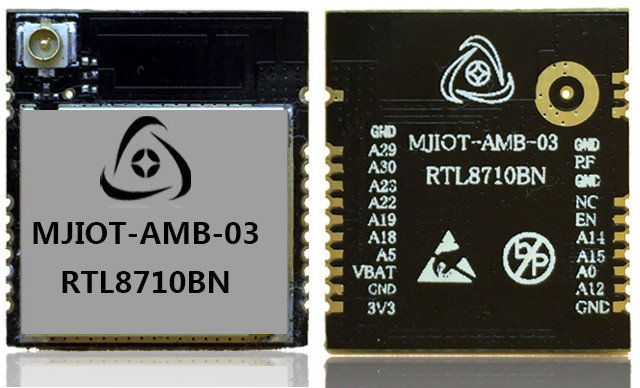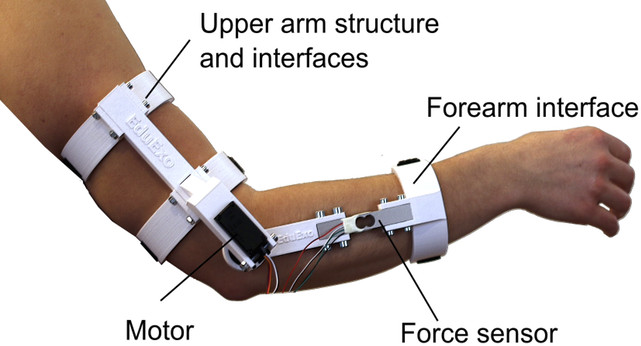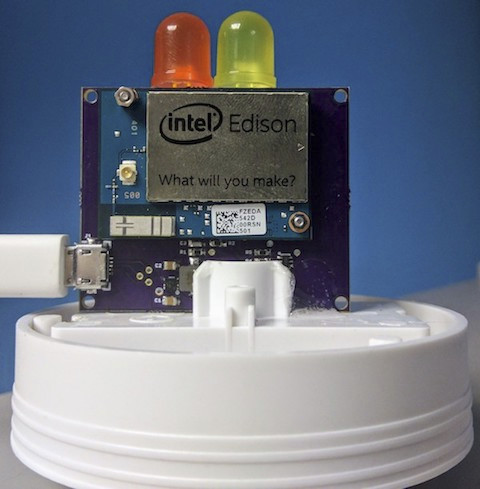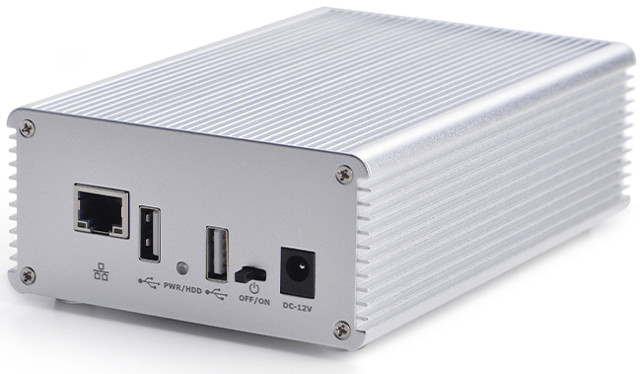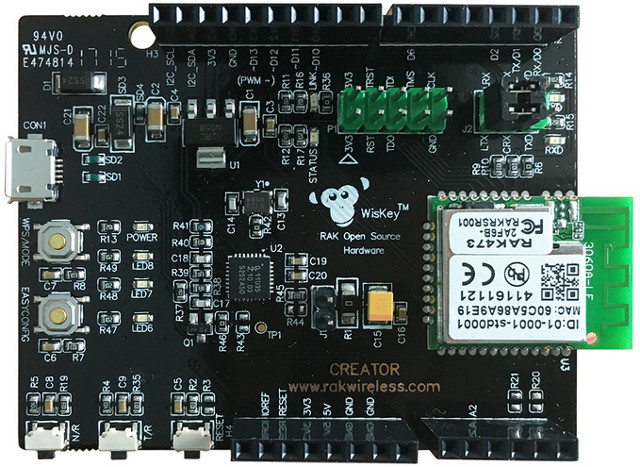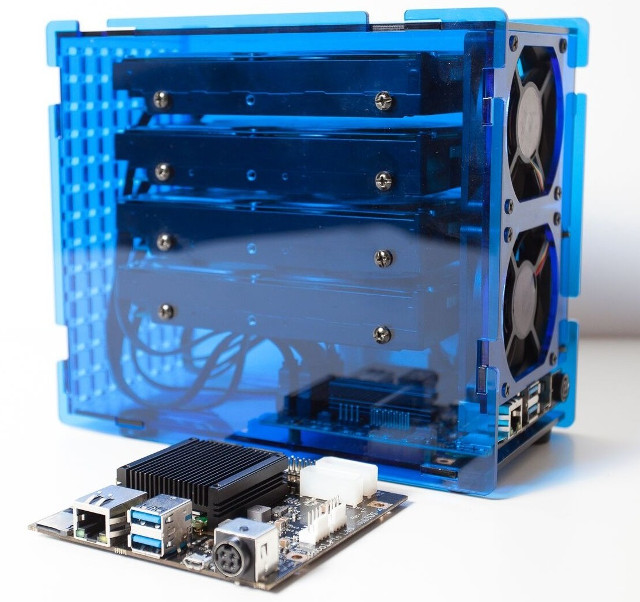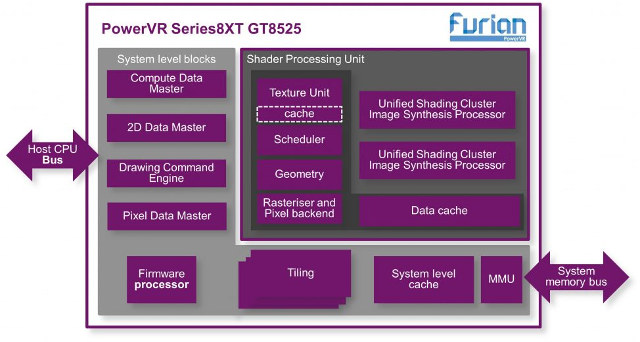GearBest is organizing a promotion for its US warehouse, and there are three good deals for TV boxes, especially with Rockchip RK3229 based SCISHION V88 going for $13.99 (limited to 30 units). Make sure you only buy one, as usually, the company will cancel orders with more than one piece for this type of promotion. If the 1GB RAM in V88 is too little for you, you may consider V88 Plus model with 2GB selling for $17.99, or Dolamee D5. There’s also a $10 discount$10 discount on Yundoo Y8 RK3399 TV Box. They also have some other discounts for 3D Printers, and drones/rc toys. All you need is a physical address in the US. Jean-Luc Aufranc (CNXSoft)Jean-Luc started CNX Software in 2010 as a part-time endeavor, before quitting his job as a software engineering manager, and starting to write daily news, and reviews full time later in 2011. www.cnx-software.com
Realtek RTL8710BN ARM Cortex M4 WiFi MCU, MJIOT-AMB-03 Module & Board, and Ameba 4.0a SDK
We’ve already covered Realtek Ameba ARM Cortex M3 WiSoC several times with their RTL8710AF, RTL8711AM and RT8195AM solutions, but the company has now a new “Ameba Z series” relying on an ARM Cortex M4 core starting with RTL8711BN MCU. RTL8710BN specifications as listed on Realtek website: CPU – ARM Cortex-M4(F) up to 125MHz with FPU (TBC) Memory – 256KB embedded SRAM Storage – 512KB embedded ROM, external flash interface; XIP (eXecut In Place) support Wi-Fi 2.4GHz 1T1R 802.11b/g/n up to 150Mbps; 20MHz and 40MHz WEP, WPA, WPA2, WPS support Security engine – MD5, SHA-1, SHA2-256, DES, 3DES, AES Peripheral Interfaces SDIO Slave 2x UART SPI interface (Master/Slave) 2x I2C interface ADC for voltage management 5x PWM Up to 17x GPIOs Package – QFN-32; 5 x 5 mm AFAIK, other Ameba MCUs do not support XIP, but RTL8710BN and this lowers memory requirements since code can be executed from storage. MJIOT-AMB-03 module […]
EduExo DIY Robotic Exoskeleton Kit is Arduino Powered, 3D Printable, Designed for STEM Education (Crowdfunding)
Robotic exoskeletons are used for medical purposes such as helping with the rehabilitation of stroke patients, or enable paraplegics to walk again, as well as in the work place to assist people lifting heavy objects. While it’s possible to learn about the theory about exoskeleton technology, practical experience may help grasping all concepts better. However, there are not many courses available, and exoskeletons are usually expensive, so Volker Bartenbach, PhD at ETH in Zürich, has decided to created EduExo robotic exoskeleton kit for education purpose. The EduExo hardware is based on off-the-shelf components like an Arduino UNO board, a motor, and a force sensor, as well as a rigid exoskeleton structure and cuff interfaces. The latter is optional as you can get the kit without it, and will instead receive the STL files to 3D print the parts yourself. There’s also a handbook to help you get started in several […]
Visualizing Electronics Manufacturing Price Variation with Volume and Lead Time
Google Android Things developers announced a production hardware sample based on Intel Edison module: Android Things is focused on helping developers build production ready devices that they can bring to market. This means building custom hardware in addition to the app software running on the Android Things system-on-module (SoM). As a part of this effort we have released Edison Candle, the first in a series of production samples designed to showcase hardware and software designed to work together. The code is hosted on GitHub and the hardware design files are on CircuitHub. That’s what the Edison Candle looks like. It’s just demo hardware to show how to build a product with a system-on-module (Intel Edison) for Android Things with everything released in Github. You can also purchase the board on CircuitHub, but then I saw the price was around $356 for such a simple board (without Edison). That’s quite a […]
NAS Kit v1.2 Gets Support for NanoPi NEO 2, an UAS Capable USB to SATA Bridge, and an RTC Battery
Last month, FriendlyELEC launched a NAS Dock kit for NanoPi NEO board, but they’ll already removed it from their store. That’s because they have a new version NAS Dock v1.2 that also supports NanoPi NEO 2 with Gigabit Ethernet, replaces JMicron JM20329 by UAS capable JMicron JMS567 USB 3.0 to SATA bridge, and adds an RTC battery. The rest of NAS Dock Kit v1.2 specifications remain the same: 1-bay NAS Dock expansion board with JMicron JMS567 USB 3.0 to SATA bridge SATA connector for 2.5″ HDD drive Extra USB host port On/off switch, and dual color status LED Header to connect NanoPi NEO / NEO 2 board 12V DC power input Dimensions – 151 x 89.7 mm NS-120 aluminum enclosure (154 x 100 x 47.5 mm, 414 grams) Heatsink set for NanoPi NEO / NEO 2 4x M3 6mm screws, 8x M2.5 6 mm screws Four rubber pads Front and back covers […]
$8.80 RAK CREATOR Pro Ameba RTL8711AM WiFi IoT Board Comes with 2MB SDRAM, Up to 64MB SPI Flash
Realtek Ameba is a family of WiFi ARM Cortex M3 micro-controllers for IoT applications, and RTL8710AF got some buzz last year, as modules would sell as low as $2, hereby competing with ESP8266 in terms of price. While the solution was interesting, the community activity around the solution has been slow as ESP8266 already have the community and software support. Other Realtek RTL8195AM and RTL8711AM processors offer much more memory, but at the time, price was not as attractive with Ameba Arduino board based on RTL8195AM selling for $25. But there’s now a new Arduino compatible board made by ShenzhenRAK Wireless Technology (RAK) that comes with RTL8711AM processor with 1MB ROM, 2MB SDRAM, 512KB SRAM, and up to 64MB SPI flash, and sells for just $8.80 + shipping on Aliexpress. CREATOR Pro (Wiskey) board specifications: WiFi Module – RAK473 with Realtek RTL8711AM ARM Cortex M3 MCU @ 166 MHz, 1MB […]
Helios4 Personal Cloud DIY NAS Supports 3.5″ Hard Drives, RAID, and More (Crowdfunding)
A few months ago, we covered GnuBee Personal Cloud 1, a NAS that runs on open source software, and that supports up to six 2.5″ SATA drives. The crowdfunding has been successful – after lowering the funding target -, and backers should hopefully get the NAS right after summer. But at the time, some people complained about the memory capacity (512MB), the lack of support for 3.5″ drives, and a few other items. A new project called “Helios4 Personal Cloud” addresses many of those concerns. It comes with 1 to 2GB RAM, enclosure supporting four 3.5″ drives, supports RAID, and is powered by Marvell ARMADA 388 processor that has been specifically designed for this type of application. Helios4 NAS specifications: SoC – Marvell ARMADA 388 dual core Cortex A9 processor @ up to 1.866 GHz with RAID5/6 acceleration engines, security acceleration engines, etc… System Memory – 1 or 2 GB […]
Imagination PowerVR “Furian” Series8XT GT8525 GPU Targets High-end Smartphones, Virtual Reality and Automotive Products
Imagination Technologies has unveiled their first GPU based on PowerVR Furian architecture with Series8XT GT8525 GPU equipped with two clusters and designed for SoCs going to into products such as high-end smartphones and tablets, mid-range dedicated VR and AR devices, and mid- to high-end automotive infotainment and ADAS systems. The Furian architecture is said to allow for improvements in performance density, GPU efficiency, and system efficiency, features a new 32-wide ALU cluster design, and can be manufactured using sub-14nm (e.g. 7nm process once available). PowerVR GT8525 GPU supports compute APIs such as OpenCL 2.0, Vulkan 1.0 and OpenVX 1.1. Compared to the previous Series7XT GPU family, Series8XT GT8525 GPU delivers 80% higher fps in Trex benchmark, an extra 50% fps in GFXbench Manhattan benchmark, 50% higher fps in Antutu, doubles the fillrate throughput for GUI, and increases GFLOPs for compute applications by over 50%. GT8525 GPU is available for licensing […]



